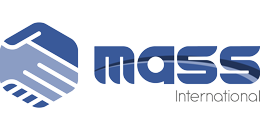Surface engineering is a very specialized subject deep within metallurgy.It is the sub discipline of materials science which deals with the surface of solid matter. Surface engineering refers to a wide range of technologies designed to modify the surface properties of metallic and non-metallic components for decorative and/or functional purposes.
It can control surface properties offering potential for:
- improved functionality
- the solution to previously insurmountable engineering problems
- conservation of scarce material resources
- reduction of power consumption and effluent output
Examples include improving corrosion and wear resistance to extend component life; making items more visually attractive; and giving special properties such as lubricity enhancement, non-stick surfaces, etc.
The aim of surface engineering is to improve the functionality of an existing product. New coatings and treatment processes may create opportunities for new products which could not otherwise exist. Surface engineering techniques are being used in the automotive, aerospace, missile, power, electronic, biomedical, textile, petroleum, chemical, steel, cement, machine tools and construction industries including road surfacing. Surface engineering techniques can be used to develop a wide range of functional properties, including physical, chemical, electrical, electronic, magnetic, mechanical, wear-resistant and corrosion-resistant properties.
Automotive Industry
The automotive industry is a wide range of companies and organizations involved in the design, development, manufacturing, marketing, and selling of motor vehicles. It is one of the world’s most important economic sectors by revenue. The automotive industry does not include industries dedicated to the maintenance of automobiles following delivery to the end-user, such as automobile repair shops and motor fuel filling stations.
The Indian automotive industry is expanding at a rapid pace not only based on the rising domestic demand but also due to its advantages as a global sourcing hub. Automobile industry accounts for over 20% of the country’s manufacturing GDP and is expected to grow further, driven by the government’s Automobile Mission Plan 2006–2016 and ‘Make in India’ program.
Changing customer patterns, new competitors, fluctuating raw material prices, and strict CO2 regulations are generating increasing levels of external pressure. And customer expectations are changing faster than ever before since the invention of the automobile. Buyers used to look mainly for greater power and sophisticated mechanics. Today they seek solutions that reduce fuel consumption ,CO2 emissions,intelligent strategies related to driverless cars, digitization, and e-mobility.. Successful car makers and suppliers are meeting these changing demands with new business models, greater innovative power, and comprehensive increase in efficiency.
In the automotive industry, the following needs to be taken care of:
- Strategy Planning
- Identifying trends, opportunities, and competition for current products and Expansion
- Establishing and monitoring performance of dealer networks
- Identifying the right customer segments and deciphering their needs and preferences
- Setting up a production facility
- Assess technology and market trends
Key trends shaping the industry:
Segments in Segments: Customer needs are segmenting further for innovation from automobile manufacturers. In this state of transition, knowing customer needs and careful sub-segmentation will give an opportunity to leverage growth.
Environmental Sustainability: Breakthrough innovations in R&D for increasing efficiency of automobiles with renewable sources will open up a new dimension in future.
Emerging markets as export destinations: Emerging countries are becoming the hub of exports for international markets due to low cost and matching skill sets. Cost pressures will pose a strong challenge for the export sector to maintain its current growth trajectory.
The automotive manufacturers today require a holistic approach to remain competitive covering the following product and production life cycle.
- Product design
- Production planning
- Production engineering
- Production execution
- Services
The auto manufacturing industry is highly capital and labor intensive. The major costs for producing and selling automobiles include:
- Labour – While machines and robots are playing a greater role in manufacturing vehicles, there are still substantial labor costs in designing and engineering automobiles.
- Materials – Everything from steel, aluminum, dashboards, seats, tires, etc. are purchased from suppliers.
- Advertising – Each year large amounts of money are spent on print, broadcast advertising,market research to anticipate consumer trends and preferences.
